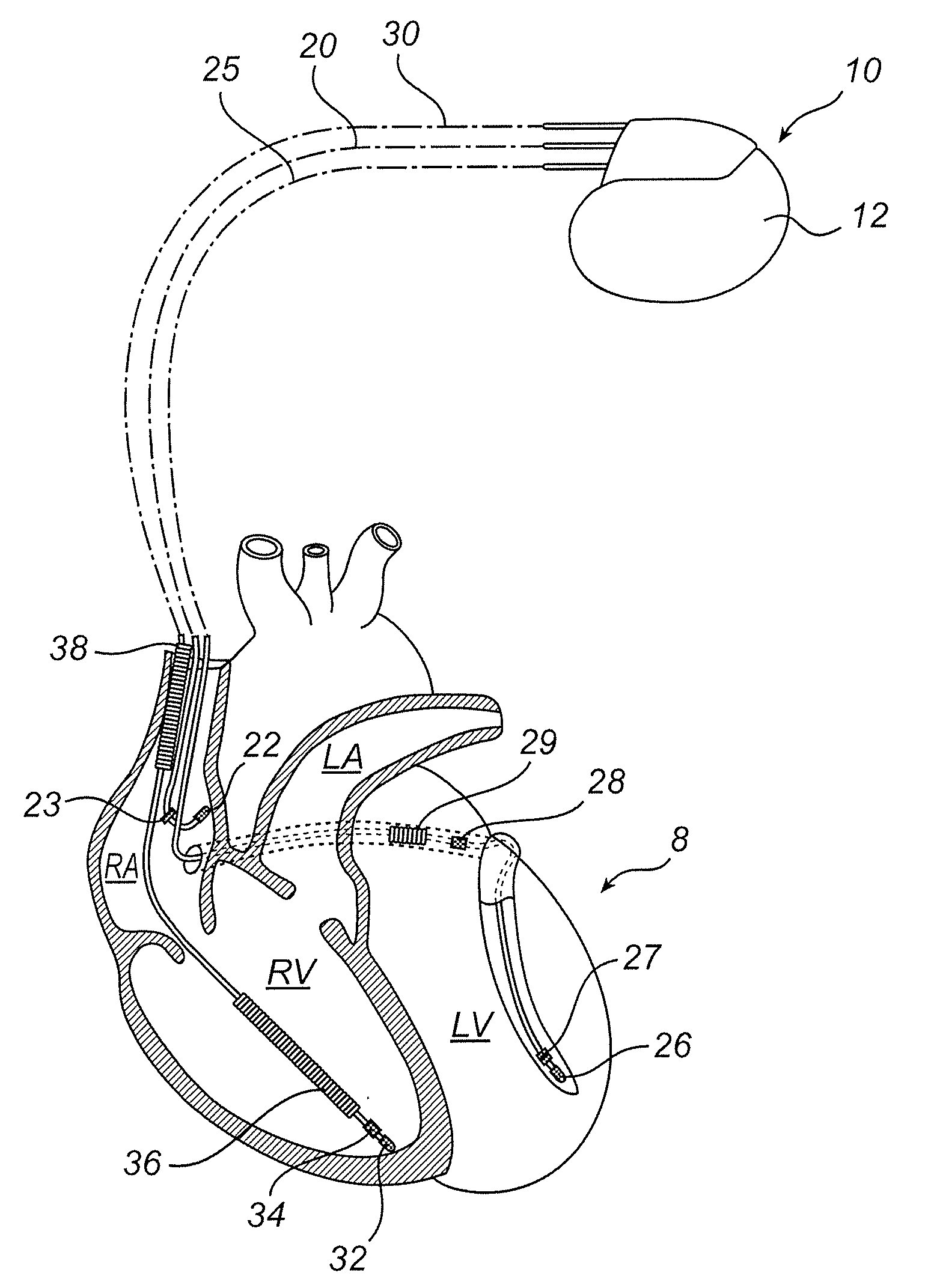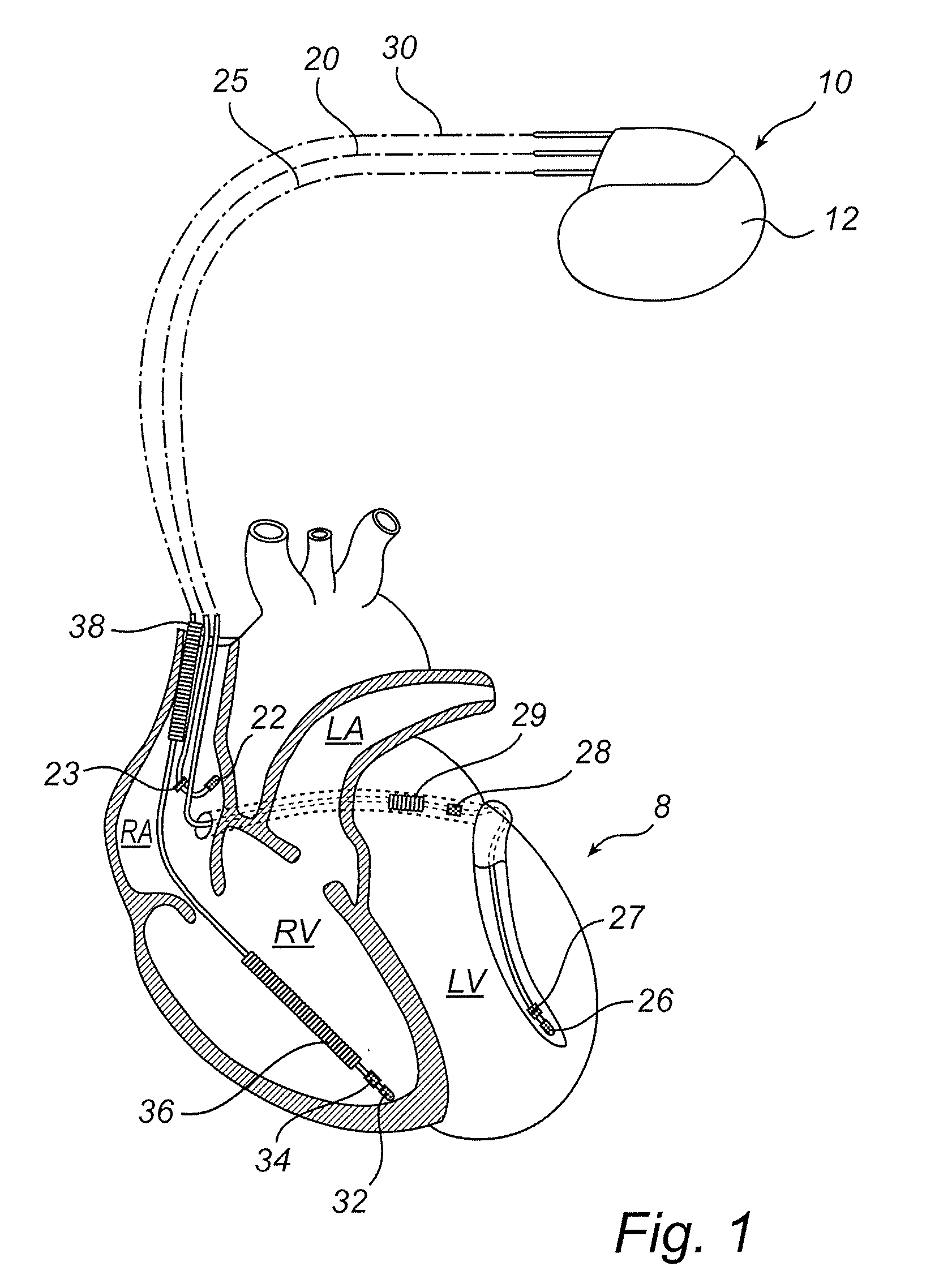Implantable medical device and method for such a device for predicting hf status of a patient
a medical device and implantable technology, applied in the field of implantable medical devices, can solve the problems of insufficient blood flow to meet the needs of tissues and organs of the body, insufficient ejection or filling of blood ventricles, and loss of propulsive power of the heart, so as to reduce the number of false indications even further, and achieve less power consumption
- Summary
- Abstract
- Description
- Claims
- Application Information
AI Technical Summary
Benefits of technology
Problems solved by technology
Method used
Image
Examples
first embodiment
[0079]According to the present invention, the temporary value, temp, is calculated in accordance with the following formula:
temp=z_ref−z_short.
second embodiment
[0080]According to the present invention, the temporary value, temp, is calculated in accordance with the following formula:
temp=zrefzshort-1.
third embodiment
[0081]Further, in accordance with the present invention, the temporary value, temp, is calculated in accordance with the following formula:
temp=1-zshortzref
[0082]Thereafter, at step 58, the temporary value, temp, is weighted by time to the preceding sample. Each sample may also be associated with a weight corresponding to the time interval to the preceding sample. For example, if two different sample rates have been used, where the first rate is half of the second rate, the sample counts made during the first rate may be associated with the weight 1 while the sample counts made during the second rate may be given or associated with the weight ½. The weighted temporary value, tempweighted, is determined in accordance with the following formula:
tempweighted=q*temp*(t(i)−t(i−1)),
where q is the applied weight, t(i) is the time point for sample i, and t(i−1) is the time point, i−1, for the preceding sample.
[0083]Then, at step 59, the patient status index, or fluid index Fl(i), is updated...
PUM
 Login to View More
Login to View More Abstract
Description
Claims
Application Information
 Login to View More
Login to View More - R&D
- Intellectual Property
- Life Sciences
- Materials
- Tech Scout
- Unparalleled Data Quality
- Higher Quality Content
- 60% Fewer Hallucinations
Browse by: Latest US Patents, China's latest patents, Technical Efficacy Thesaurus, Application Domain, Technology Topic, Popular Technical Reports.
© 2025 PatSnap. All rights reserved.Legal|Privacy policy|Modern Slavery Act Transparency Statement|Sitemap|About US| Contact US: help@patsnap.com



